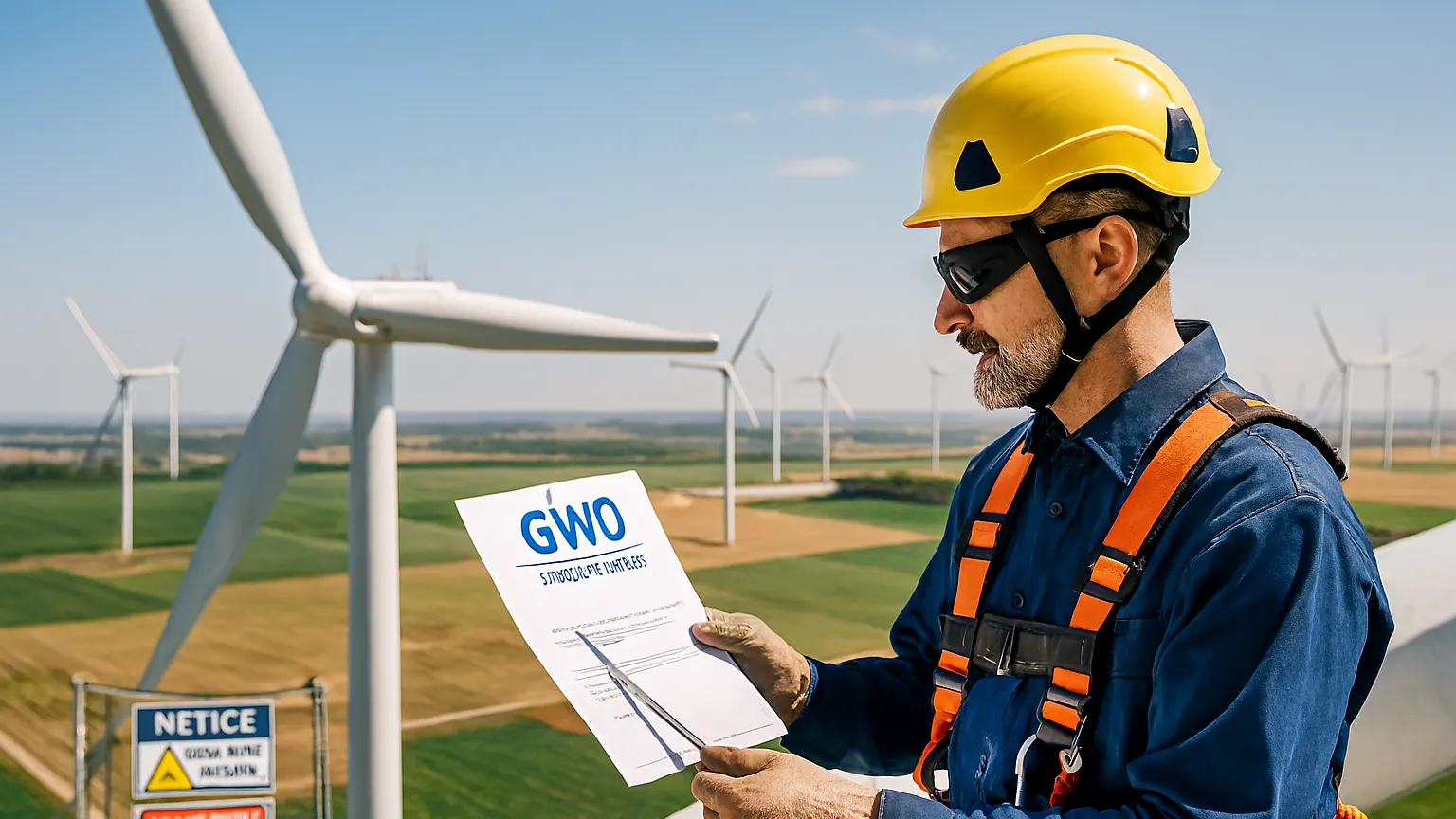The renewable energy sector is expanding rapidly and wind power is at the center of this transformation. Wind turbines are complex machines located in remote environments where technicians face significant risks every day. To meet these challenges, the Global Wind Organisation established a recognized framework for training and assessment. Workers who complete the program receive GWO certificates, proving they meet the international safety and technical standards required to operate in this demanding industry.
Employers increasingly view GWO certification as a prerequisite for recruitment and project deployment. By ensuring their teams hold valid GWO certificates, companies demonstrate that workers are prepared to climb towers, handle heavy components, and respond effectively to emergencies. The certification process does more than meet compliance; it builds a workforce that can work consistently, safely, and efficiently in a sector where any delay or accident can have serious consequences.
What GWO training and certificates cover
The pathway to GWO certification is structured into specific modules that target the most common risks on wind farms. Courses address working at height, manual handling, fire awareness, sea survival, and first aid. Each is designed to reflect real turbine conditions, giving technicians confidence that what they practice in training will be applied directly in the field.
Earning gwo certificates provides workers with internationally recognized proof of competence. This consistency is valuable for employers operating across multiple countries, as they can hire staff knowing that their skills align with the same global standards. For technicians, these certificates improve employability and open opportunities to participate in international projects where standardized credentials are required.
How certification benefits both workers and employers
The benefits of GWO certification extend far beyond the individual worker. For employees, holding GWO certificates increases confidence when performing high risk tasks and strengthens career prospects. For employers, it provides assurance that their teams can handle the physical and technical challenges of turbine maintenance and construction. This reduces downtime, lowers incident rates, and improves coordination among mixed crews who may come from different contractors but share the same training background.
Worksites where staff hold GWO certificates are also more attractive to investors and project owners. Demonstrating that crews are fully trained signals reliability, which strengthens trust and helps organizations win new contracts. Safety performance and commercial success often go hand in hand in the renewable sector, making certification a strategic investment.
Why certification supports long term industry growth
Wind energy is expanding across regions with very different regulatory environments, from coastal Europe to inland Asia and the Americas. Without a standardized training scheme, companies would struggle to align their safety expectations across borders. The introduction of GWO certificates has solved this problem by creating a globally accepted reference point. A worker trained in one country can join a project elsewhere and still be fully recognized for their skills. This mobility is essential for the future of energy, as companies often shift personnel between sites depending on demand.
Standardization also supports governments and regulators who want to ensure that the workforce building renewable infrastructure operates to consistent levels of safety. By recognizing these certificates, authorities can integrate private training efforts into national strategies for renewable expansion, which further strengthens the role of certification in the long term.
The role of training providers
The impact of certification depends on how well it is delivered. Effective providers translate standards into realistic drills and ensure that participants leave with practical, site ready skills. They use modern equipment, turbine replicas, and instructors with direct industry experience to create relevant and engaging training environments.
FMTC Safety is an example of a provider that has built strong recognition in this space. By offering courses that meet international requirements while remaining accessible to companies worldwide, FMTC helps employers integrate training into their schedules without disrupting project deadlines. Choosing trusted providers ensures that GWO certificates are more than paperwork; they become proof of skills that can be applied immediately.
Building a workforce for the future of energy
The global shift toward renewable energy depends on technicians who can do difficult jobs safely and repeatedly. Certification and the resulting GWO certificates are essential tools for preparing that workforce. They support consistency across borders, give workers confidence in their skills, and provide employers with a clear standard for recruitment and compliance.
By prioritizing training and working with established providers, the wind industry can continue to expand while keeping safety at its core. The result is a resilient workforce ready to support the rapid growth of renewable energy for decades to come.



































